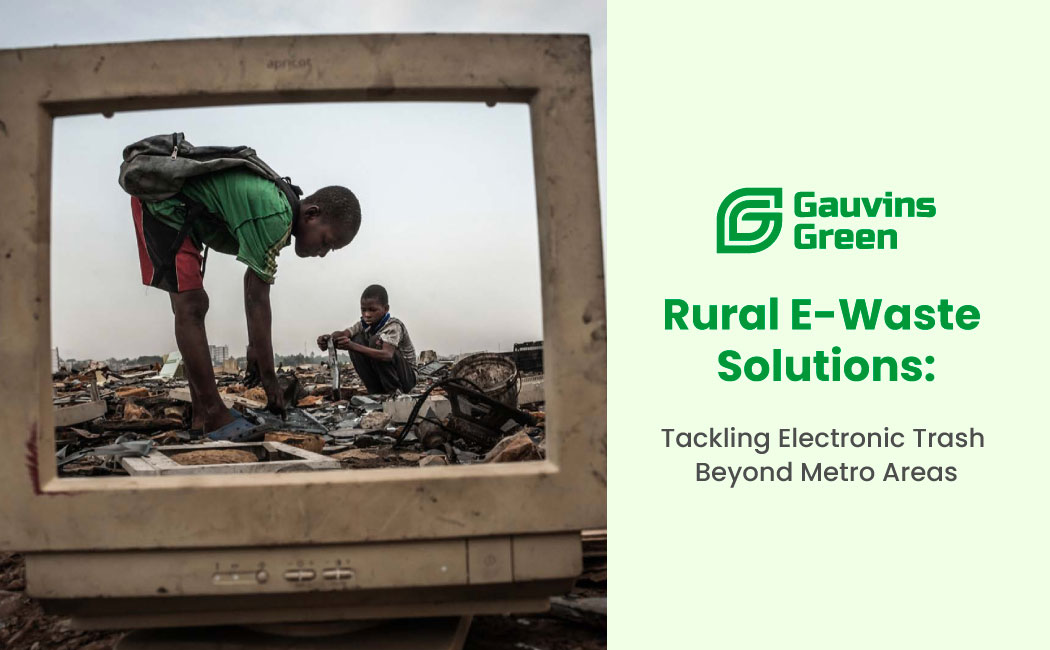|
Getting your Trinity Audio player ready...
|
In an era defined by rapid technological advancements, our collective enthusiasm for the latest electronic gadgets has led to an unprecedented surge in electronic waste. As we marvel at the pace of innovation, it’s crucial to pause and reflect on the e-waste statistics that underscore the environmental footprint of our digital lifestyles. How can we reconcile our tech-driven world with the imperative to safeguard our planet?
Table of Contents
ToggleThe E-Waste Dilemma
E-waste statistics paint a concerning picture of the global challenge we face. Delving into the specifics:
- Overwhelming Volume: E-waste statistics reveal that in 2021, we generated a staggering 57.4 million metric tonnes of electronic waste.
- Insufficient Recycling: Alarmingly, only 17.4% of this e-waste was recycled, a figure gleaned from e-waste statistics that highlights a significant gap in our recycling capabilities.
- Hazardous Components: E-waste contains toxic substances, posing grave environmental and health risks. These e-waste statistics call for urgent action to mitigate the dangers associated with improper disposal.
E-waste statistics not only illuminate the scope of the problem but also serve as a clarion call for increased recycling and waste management efforts.
Global Perspective on E-Waste
A comparison of e-waste statistics across regions reveals a complex global landscape:
- Asia: Tops the e-waste statistics charts as the largest producer, yet faces variable recycling success rates across different countries.
- Europe: Demonstrates leadership in e-waste recycling, bolstered by robust regulations, according to e-waste statistics.
- Africa & Latin America: These regions confront challenges due to informal recycling sectors, underscoring the need for infrastructure improvements as indicated by e-waste statistics.
The diversity in e-waste statistics globally underscores the necessity for a cohesive international approach to address e-waste effectively.
The Imperative for Recycling
The critical importance of recycling is magnified by e-waste statistics, highlighting both environmental and economic stakes. The e-waste recycling market, with its $49,880 million valuation, underscores recycling’s potential for sustainable growth, resource conservation, and carbon footprint reduction. These e-waste statistics advocate for robust recycling strategies to harness economic benefits while protecting the planet.
Call to Individual and Collective Action
E-waste statistics serve as a catalyst, urging us towards responsible consumption and active participation in e-waste management:
- Reduce: Mindful purchasing can significantly impact e-waste statistics, curbing the generation of electronic waste.
- Reuse: Repairing and repurposing electronics can extend their life, a vital strategy suggested by e-waste statistics.
- Recycle: Engaging with e-waste recycling initiatives directly contributes to improving e-waste statistics.
Envisioning a Greener Future
Innovations in recycling and successful e-waste management strategies provide hope. By learning from these initiatives, we can leverage e-waste statistics to guide us toward a sustainable future, reducing the environmental impact of our digital age.
Conclusion
The e-waste statistics are clear: the time for action is now. By understanding the magnitude of e-waste and embracing sustainable practices, we can address this challenge head-on. Let’s unite in our efforts to improve e-waste statistics, fostering a world where technology and environmental stewardship coexist harmoniously.
FAQ’s
- What are the latest e-waste statistics?
- As of the latest reports, the world generated approximately 57.4 million metric tonnes of e-waste, with only 17.4% being recycled properly. This highlights the critical need for improved recycling and management strategies to handle the growing volume of electronic waste globally.
- Why is e-waste recycling important?
- E-waste recycling is crucial for several reasons. It helps recover valuable materials, reduces the environmental impact of raw material extraction, minimizes the space required for landfills, and prevents the release of toxic substances into the environment. Recycling e-waste supports both economic development and environmental protection.
- How can individuals contribute to solving the e-waste problem?
- Individuals can make a significant difference by adopting a more sustainable approach to electronics, including reducing unnecessary purchases, extending the lifespan of devices through repairs, and properly recycling old electronics at designated recycling centers. Educating oneself and others about the importance of e-waste management also plays a vital role.
- What are some innovative solutions to the e-waste challenge?
- Innovative solutions to the e-waste challenge include advanced recycling technologies that efficiently recover precious materials, the design of electronics with recycling in mind (easier disassembly and material separation), and the development of global standards for e-waste management. Initiatives promoting the circular economy, where products are designed for longevity, reuse, and eventual recycling, are also gaining traction.




